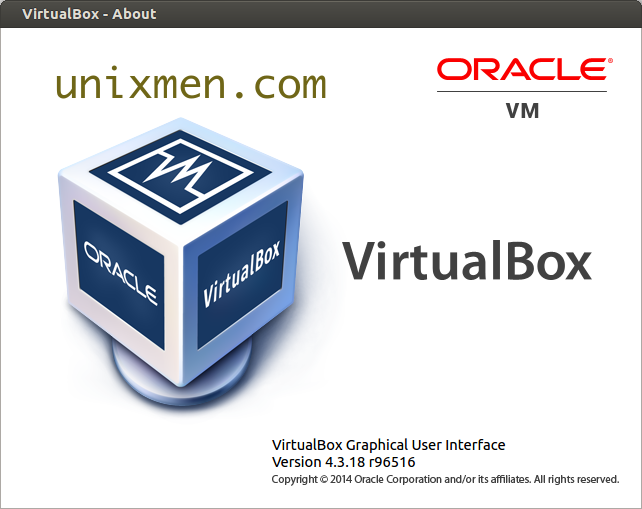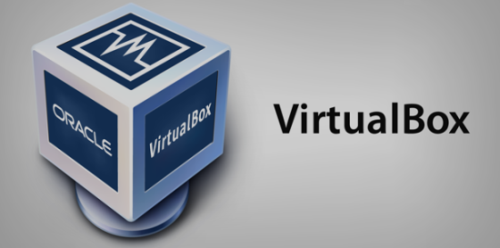
Virtualbox 4.3.18 has been released about three days ago, bringing many different fixes for major operating systems such as Ubuntu Linux, Windows and Mac OS X. The potential misbehavior after restoring the A20 state from a saved state has been fixed, virtualbox does not crash anymore in linux hosts with old versions of the linux kernel, a few remaining warnings in the kernel log if memory allocation fails have been fixed and the GNOME Shell on Fedora 21 is not prevented anymore from starting when handling video driver display properties.
Thanks to this maintenance release Ubuntu users have now the possibility to use legacy full-screen mode under Unity without experiencing multi-screen issues. Another important issue related to Unity that has been fixed with the release of 4.3.18 version is the quirk in full-screen mode Unity panels caused by mini-toolbar code changes in last release.
You can read the full list of fixes of this release below:
- VMM: fixed a potential misbehavior after restoring the A20 state from a saved state
- GUI: fixed full-screen mode mini-toolbar related regressions for different platforms and window managers (bug #13369)
- GUI: X11: fixed full-screen mode Unity panels quirk caused by mini-toolbar code changes in last release (bug #13365)
- GUI: X11: added possibility to use legacy full-screen mode as the new one can cause multi-screen issues under Unity, see the manual for more information (bug #13365)
- GUI: Mac OS X: fixed full-screen mode artifact causing black screen when 3D acceleration was enabled on 10.10 Yosemite hosts (bug #13448)
- GUI: Mac OS X: fixed regression in user-space swiping from/to VBox in full-screen mode
- GUI: Mac OS X: fixed issue with switching to VBox in full-screen mode through Alt+Tab and Mission Control
- Storage: fixed data corruption when resizing huge VHD images under certain circumstances (bug #11960)
- Storage: fixed a rare hang during startup when the BIOS enumerates the storage devices attached to the SATA controller
- Storage: follow the spec with AHCI interrupt acknowledge (bug #13474)
- Storage: fixed broken iSCSI authentication (4.3.14 regression, bugs #13386, #13435)
- NAT Network: properly parse port forwarding rules to allow UDP rules
- USB: fixed a crash on Linux hosts with older Linux kernels (bug #13400) and several other fixes
- ACPI: fixed ACPI timer anomalies (bug #12076)
- Guest Control: fixed a memory leak (bug #13434)
- Main: when removing a VM, do also remove the VBoxStartup.log file which might exist on Windows hosts (bug #13478)
- Windows hosts: fixed more startup problems on certain Windows hosts due to conflicts with anti-virus software; better error reporting (4.3.14 regression; bug #13187)
- Windows hosts: propagate the process startup information to the child process (4.3.14 regression; bug #13243)
- Mac OS X hosts: don’t force using the discrete GPU (bug #11111)
- Windows Additions: some Windows 10 tweaks
- X11 guests: fix a bug handling video driver display properties which prevented GNOME Shell on Fedora 21 from starting
- Linux hosts / guests: fixed a few remaining warnings in the kernel log if memory allocation fails (bug)
What is Virtualbox?
Virtualbox is a completely free professional virtualization solution available for Windows, Linux, Macintosh and supports a large number of guest operating systems such as DOS/Windows 3.x, Linux (2.4, 2.6 and 3.x), Solaris and OpenSolaris, OS/2, and OpenBSD. It is extremely feature rich, high performance product and the friendly user interface it has makes easy for everyone to use it.
How to install Virtualbox 4.3.18 in Linux
Since VirtualBox developers provide binaries for the biggest Linux distros it is not that hard to install it on your own machine. You can easily grab the Virtualbox product from the official page, a few terminal commands will help you to install it.
On Ubuntu:
Once you have downloaded the Virtualbox deb package for your specific Ubuntu distribution, open a terminal (CTRL+ALT+T) and run the following commands.
First make sure to remove the old version of your Virtualbox with the help of the apt-get package manager. Use the following command.
sudo apt-get remove virtualbox
Then install the new version.
sudo dpkg -i virtualbox-4.3_4.3.18-96516~Ubuntu~precise_amd64.deb
Make sure to replace virtualbox-4.3_4.3.18-96516~Ubuntu~precise_amd64.deb with your own package name.
On Oracle Linux:
Users of Oracle Linux 5 and 6 can update to the latest version of Virtualbox by using the public yum repository and enable the el5_addons (OEL5) or the ol6_addons (OL6).
Then open a terminal and run the following command to install Virtualbox 4.3.18 in your machine.
yum install VirtualBox-4.3.18
Fedora:
First make sure to remove any older version. You can easily remove the old version of Virtualbox by using the following command.
yum remove VirtualBox-4.x
Once the old version is uninstalled from your Fedora machine, use the rpm package manager to install Virtuabox 4.3.18. The yum install command can help you to install local rpm files in your Fedora system.
su -c yum install *.rpm





